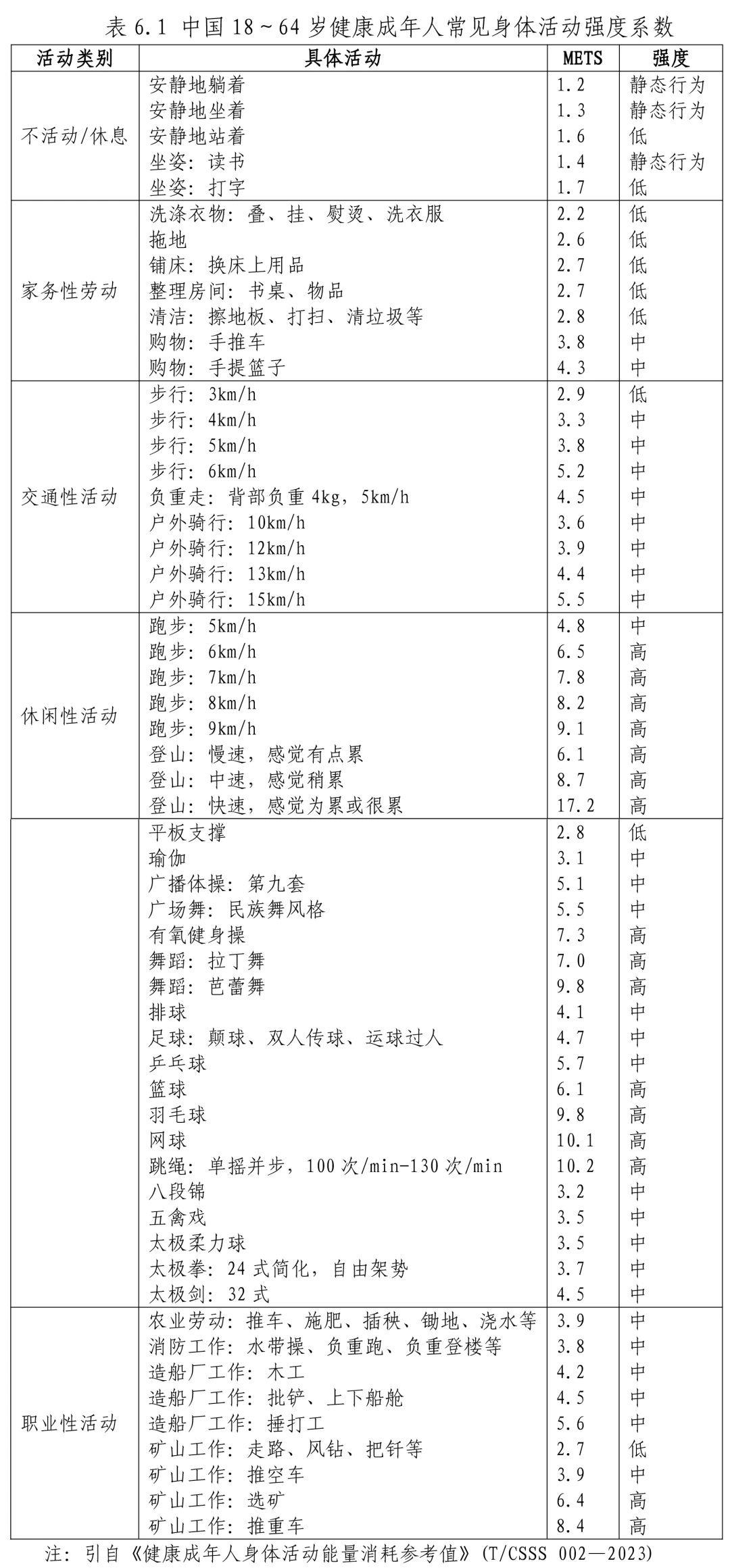Want to know how much energy daily chores, walking, or running actually burn? How are different exercise intensities categorized?
Don’t worry—this “Physical Activity Intensity Index for Healthy Chinese Adults Aged 18–64” chart has all the answers. Save it for quick reference!
Metabolic Equivalent (MET) measures the metabolic cost of physical activity. The value represents how much energy an activity burns compared to resting energy expenditure.
Specifically, 1 MET equals the energy expenditure rate while sitting quietly—about 3.5 ml of oxygen per kilogram per minute. Simply put, higher MET values indicate greater exercise intensity.

Based on MET values, common activities fall into 4 categories:
Sedentary behavior (≤1.5 MET): Examples include prolonged sitting while watching TV, using a computer, or lying down scrolling on a phone. These activities burn very little energy.
Light intensity (1.6–2.9 MET): Activities like slow walking, washing dishes leisurely, or routine mopping fall here. While there’s some movement, the intensity remains low.
Moderate intensity (3.0–5.9 MET): Examples are brisk walking, cycling at a moderate pace, or square dancing. These cause slight body warmth and faster breathing.
Vigorous intensity (≥6.0 MET): Activities like fast jump rope, running, or playing basketball lead to heavy breathing and a noticeably faster heartbeat.
For more physical activity intensity indexes, check the table below↓


Formula: MET value × weight (kg) × time (hours)
Example: A 60 kg person doing 30 minutes of square dancing (5.5 MET) burns approximately 165 kcal (5.5 × 60 × 0.5).




